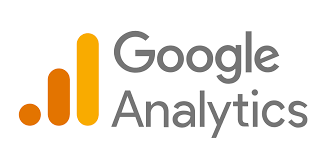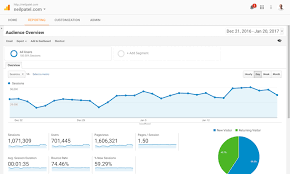As a business owner, you dedicate countless hours and effort to capturing your customers’ attention. But without a reliable analytics tool, it’s difficult to know whether your marketing and website strategies are actually effective. Google Analytics offers a comprehensive solution by providing detailed insights into your website traffic and visitor behavior. It helps you understand where your visitors come from, which pages they engage with, and what actions they take on your site. Whether your goal is to attract new customers, improve user experience, or increase conversions, Google Analytics equips you with the data needed to make informed decisions. By leveraging its powerful features and customizable reports, you can optimize your marketing efforts and grow your business more efficiently. This guide will introduce you to Google Analytics’ key features and explain how to get started, helping you unlock the full potential of your website visitors. google analytics for beginners

What is Google Analytics?
Google Analytics offers an easy and free way to track and analyze visitors on your website. You could have thousands of visitors every month, but those visitors are practically meaningless if you don’t know anything about them. Google Analytics can teach you what you need to know. google analytics for beginners
In addition to tracking the number of visitors, Google Analytics provides key insights into how your website is performing and what you can do to meet your goals. You can track everything from how much traffic your website is getting to where that traffic is coming from and how visitors are behaving. You can even monitor social media activities, track mobile app traffic, identify trends and integrate other data sources to help you make well-informed business decisions. google analytics for beginners
How do you set up Google Analytics?
Here’s how to get started with Google Analytics for your business website. google analytics for beginners
Google Analytics Basics
If you want to skip the details and just get started, here’s a rundown of how to set up Google Analytics on your website:
- Create a Google Account
If you don’t already have a Google account, create one at accounts.google.com. - Go to Google Analytics
Visit analytics.google.com and sign in with your Google account. - Set Up a New Account
Click on “Start measuring” and fill in your account name (usually your business name). - Add Property Details
Enter your website name, URL, industry category, and time zone. - Get Tracking Code
Google Analytics will generate a tracking code (a small piece of JavaScript). - Add Tracking Code to Your Website
Copy this code and paste it into the <head> section of every page on your website. If you use platforms like WordPress, Shopify, or Wix, there are easier ways to add this code via plugins or settings. - Verify Setup
After adding the code, check if Google Analytics is receiving data by visiting your website and looking at the “Real-Time” report in your Analytics dashboard.

How to Create a Google Account
- Go to accounts.google.com/signup
- Enter your name, choose a username, and create a password
- Click Next
- Add your phone number and verify it
- Enter your birthdate and gender
- Agree to the terms and click Create Account
How to Access and Start Using Google Analytics (Step-by-Step Guide)
Step 1: Go to the Google Analytics Website
- Open your web browser (like Chrome, Firefox, etc.).
- Visit the official site: https://analytics.google.com
Step 2: Sign in with Your Google Account
- Click “Sign in to Analytics” (top right corner).
- Enter your Google email and password.
(If you don’t have a Google account, you’ll need to create one first. (Create a Google Account)
Step 3: Start Setting Up Your Account
- Click the blue “Start measuring” button.
- Enter an Account Name (this could be your business or website name).
- Click Next.
Step 4: Set Up Property Details
- Enter your Property Name (usually your website name).
- Choose your reporting time zone and currency.
- Click Next.

Step 5: Choose What You Want to Measure
- Select the platform you’re measuring (usually Web, but you can also choose App or both).
- Click Next.
Step 6: Enter Business Details
- Choose your industry category and business size.
- Select how you intend to use Google Analytics (e.g., measure customer engagement).
- Click Create.
Step 7: Accept Terms of Service
- Read and agree to Google’s Terms of Service and Data Processing Terms.
- Click “I Accept”.
Step 8: Get Tracking ID or Measurement ID
- You’ll be given a tracking code (for older Universal Analytics) or a Measurement ID (for Google Analytics 4).
- This needs to be added to your website to start collecting data.
What are the features of Google Analytics?
One of the best things about Google Analytics is that it offers a range of metrics that users can customize to fit their needs. All of Google Analytics’ features can be accessed and configured from the left sidebar. google analytics for beginners
1. Real-Time Data
See what’s happening on your website right now — how many people are online, where they’re from, and which pages they’re viewing.
2. Audience Insights
Learn about your website visitors — their age, gender, location, interests, device (mobile or desktop), and more.
3. Traffic Sources
Find out how users are reaching your website — from search engines (like Google), social media, emails, ads, or directly.
4. User Behavior Tracking

See which pages users visit, how long they stay, where they click, and where they leave your site (bounce rate).
5. Conversion Tracking
Track important actions like sign-ups, purchases, or contact form submissions to measure how well your site performs.
6. Custom Reports & Dashboards
Create personalized reports and dashboards to focus on the metrics that matter most to your business.
7. Event Tracking
Track specific actions like button clicks, downloads, video plays, or scrolling behavior.
8. Goal Setting
Set and track goals (like completed purchases or newsletter signups) to measure your website’s success.
9. E-commerce Tracking
For online stores, Google Analytics tracks product performance, revenue, checkout behavior, and sales funnels.
10. Integration with Other Tools
Easily connects with tools like Google Ads, Google Search Console, Google Tag Manager, and Data Studio for deeper insights.
Important Google Analytics Terminology You Should Know
1. Users
People who visit your website. A “user” can visit your site multiple times.
2. Sessions
A session is one visit to your website. It includes all actions a user takes during that visit (like viewing pages or clicking buttons).
3. Pageviews
The total number of pages viewed by users. Repeated views of the same page are also counted.
4. Bounce Rate
The percentage of users who leave your website after viewing only one page — a high bounce rate can mean your content isn’t engaging enough.
5. Traffic Source / Medium
Tells you where your visitors came from — for example, search engines (Google), social media (Facebook), or directly typing your website URL.
6. Conversion
An action you want users to take — like making a purchase, signing up, or filling out a contact form.
7. Goal
A goal is a specific action or result you want to track (e.g., newsletter signup, download, sale).
8. Event
A specific user interaction on your site, such as clicking a button, watching a video, or downloading a file.

9. Audience
Details about your website visitors — such as age, gender, interests, location, language, and device.
10. Landing Page
The first page a user sees when they visit your website.
11. Exit Page
The last page a user visits before leaving your site.
12. Acquisition
This section shows how users find your website (e.g., through search engines, social media, email, or ads).
13. Behavior
This tells you what users do on your website — which pages they visit, how long they stay, and what they click.
14. Engagement Time (in GA4)
The actual time users are actively engaging with your website or app (not just leaving the tab open).
15. Session Duration
The total time a user spends on your website during a single session.
What are the benefits of using Google Analytics?
The metrics that Google Analytics helps you track can give your business a leg up in understanding your audience. Here are some of the advantages to keep in mind when considering if it’s worth it to use Google Analytics.
Gain insight into your customers’ behavior
Google Analytics gives you a full view of the consumer journey. Use Google Analytics visualization and reporting features to see what’s bringing customers in and where they’re spending the most time on your website.
Achieve visibility into areas that could improve
Just as Google Analytics can show where you’re doing well, it can also tell you where you need to refine your products or website content. If traffic is dropping off significantly or you’re seeing a low conversion rate, this may be a signal to overhaul the pages in question.
Help your business grow with Google Analytics
Google Analytics comes with a range of features to measure the data you need to expand your business. As a tool with mostly free features, all you’ll need to get started is a Google account. Track your customers’ journey with Google Analytics and see what you’re doing right and what areas you need to improve. google analytics for beginners on page seo
